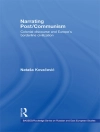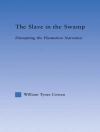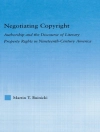Technologies of Feminist Speculative Fiction: Gender, Artificial Life, and the Politics of Reproduction explores how much technology has reshaped feminist conversations in the decades since Donna Haraway’s influential “Cyborg Manifesto” was published. With sections exploring reproductive technologies, new ways of imagining femininity and motherhood via artificial means, queer readings of gender as a social technology, and posthuman visions of a world beyond gender, this book demonstrates how feminist speculative fiction offers an urgently needed response to the intersections of women’s bodies and technology. This collection brings together authors from Europe, Japan, the US and the UK to consider speculative films and texts, reproductive technologies and food futures, and opportunities to rethink family, aging, gender and sexuality, and community through feminist speculative fiction, a social technology for building better futures.
Table of Content
1. Introduction: Sociotechnical Design and the Future of Gender.- Part I Reproductive Technologies.- 2. Ectogenesis on the NHS: Reproduction and Privatization in Twenty-first-Century British Science Fiction.- 3. Being an Artificial Womb Machine-Human.- 4. Environmental Sterilization through Reproductive Sterilization in Sarah Hall’s
The Carhullan Army.- 5. Groomed for Survival – Queer Reproductive Technologies and Cross-Species Assemblages in Larissa Lai’s
The Tiger Flu.- Part II Reimagining the Woman.- 6. A Housewife’s Dream? Automation and the Problem of Women’s Free Time.- 7. Motherhood Beyond Woman:
I Am [a Good]
Mother and Predecessors Onscreen.- 8. Gender and Reproduction in the Dystopian Works of Sayaka Murata.- 9. Cyborg Separatism: Feminist Utopia in
Athena’s Choice.- Part III Queering Gender.- 10. Drowning in the Cloud: Water, the Digital and the Queer Potential of Feminist Science Fiction.- 11. Making the Multiple: Gender and the Technologies of Multiplicity in Cyberpunk Science Fiction.- 12. Lesbian Cyborgs and the Blueprints for Liberation.- Part IV Posthuman Females.- 13. Becoming Woman: Healing and Posthuman Subjectivity in Garland’s
Ex
Machina.- 14. Female Ageing and Technological Reproduction. Feminist Transhuman Embodiments in Jasper Fforde’s
The Woman Who Died A Lot.- 15. ‘Growgirls’ and Cultured Eggs: Food Futures, and Feminism in SF from the Global South.- 16. Reproductive Futurism, Indigenous Futurism, and the (Non)Human to Come in Louise Erdrich’s
Future Home of the Living God.
About the author
Sherryl Vint is Professor of Media and Cultural Studies and of English at the University of California, Riverside, USA. She has published widely on speculative fiction, including Biopolitical Futures in Twenty-First Century Speculative Fiction (2021) and the edited collection After the Human: Culture, Theory and Criticism in the Twenty-First Century (2020).
Sümeyra Buran is an Associate Professor of English at Istanbul Medeniyet University (IMU), Turkey and a Visiting Scholar in the Department of Gender and Sexuality Studies at the University of California, Riverside, USA. She is the founding and coordinating editor of Journal of Posthumanism, editor of the collection Edebiyatta Posthümanizm (2020) and editor of the Posthumanism Series for Transnational Press London.












